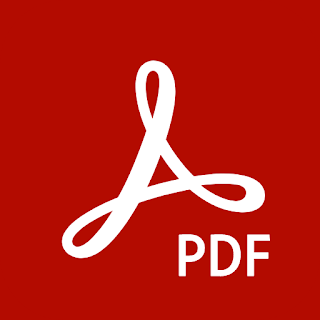What are the features of on-page SEO? How can I make my website SEO-friendly?
1. Meta tags
Title — use your primary keyword at least once in the page title as close to the start of the title as possible. A primary key would be the one with the highest search volume from your keyword cluster.
Optimize the title for both search terms and user intent — getting a real estate on the first page for the desired search term today doesn't guarantee you'll be ranking on the first spots tomorrow if searchers don't click your listing or the bounce rate is significantly worse than your competitor's.
Keep your titles under 60 characters (600px).
Here's a title format example: Primary Keyword — Secondary Keyword | Brand Name, Location
Description — is a concise summary of the page's intent (not longer than 140-160 characters or 1, 100px) that isn't used directly in ranking algorithms (at least search engines representative say this), but is extremely important from the CTR perspective.
Descriptions serve more like an advertising copy that's intended to draw searcher's attention — do your best to craft compelling text for this part of the page's SEO.
You can steal some worthy ideas from the niche top competitors ;)
It is important that meta title and description on each page be unique. Run your site audit to verify that you don't have any duplicates.
2. Headings
Your H1 heading should be different from the title, yet not so different from the text in the title that a user who's clicked on a listing in the SERP would see a completely different page contents. Make sure that the H1 heading is semantically associated with the title while containing somewhat different keywords.
H1 is where webmasters place the first- or second-highest search volume keyword with a few supporting keywords. Make sure to check that your site's code has only one H1 per page and no duplicates.
For subsequent H2-H3 headings, you can use other target keywords with lower search volumes.
4. Images
Place your target keyword in at least one image filename and alt text on the page. Image filename, alt attribute, and surrounding text impact your rankings. First and foremost, your image may be displayed in an image search results and the alt attribute is regarded similarly to the anchor text when the image is linked to. It may also have some minor influence on the page rankings as an added benefit.
5. SEO-friendly URLs
Search engines recommend including a few target keywords in a URL. Google says that the first keywords in the page address are given more weight, so you'd want to keep your URLs short and keyword-targeted.
Don't use too many words, 3-6 words will be enough. The importance of keywords in a URL is not that high for rankings as keywords used in meta tags or page headings, but still, they impact SEO and CTR. You can place some of the non-primary keywords in the page address.
A bad URL example://www.domain.com/online.store/new_products/productid/85362/show.html
A good URL example://www.domain.com/home-security-cameras/vimtag-vt-361-video-monitoring-surveillance/
URLs not only make your page a bit more relevant to search queries but also appears in search results.
Develop and implement logical URL structure to help users and search engine spiders figure out how the categories and pages are associated with each other. Name your categories and subcategories with appropriate keywords and turn category and product IDs into relevant descriptive text.
Keyword Research With Sersptat
Serpstat is super effective marketing tool for SEO/PPC pros but it’s downright easy to use even if you have no previous experience in SEO. Here’s how it’s done:
First, you need to come with a few keywords that potential customers might search for. Input a keyword into the search bar on Serpstat and start your keyword research journey.

At the moment you click Search, Serpstat transfers you to the Overview tab. Here you'll see general metrics of the analyzed keyword: Search Volume, Keyword Difficulty and so forth.

The most important metric here would be the Search Volume (how many people plug that keyword in Googe's search every month) and Keyword Difficulty (how hard it is to get to the first page of the SERP for that keyword). KD is measured on a scale from 0 to 100.
Scroll a little bit down the page to see the details on the KD for this search term: what pages rank in top 10 search results and how many backlinks they have. What this gives you is the ability to apply skyscraper technique: look through the content on those top-performing pages and make something even better.

Our goal is to collect a bunch of keywords with a high score of semantic similarity, so we'll proceed to another tab.
1. Keyword Selection — displays all keywords from our database that contain the word you've plugged into the search bar.

You can filter the results before exporting — for example, by adding negative keywords. This will allow you to get more "clean" dataset to work on.
2. Related Keywords — this tool provides you with LSI keywords. Not the ones that you'll find on other SEO platforms where they show you search suggestions and say these are LSI keywords (we have a dedicated Search Suggestions tool for this).
Serpstat Related Keywords report displays search queries that produce almost the same results among top 20 URLs for a keyword as the search term you've input for analysis. Simply put, the search engine thinks that these search queries have an intent similar to your targeted keyword.
Sometimes you'll see a lot of misspelled keywords here, or you'd find them strange — that's totally okay, of course, you don't necessarily have to use irrelevant or misspelled keywords. But we recommend to look through this list — you'll almost sure notice a few dozens of traffic-driving, perfectly matching search queries that no one, including your competitors, would have thought about.
Your most valuable metrics here would be Search Volume and Connection Strength. The latter gives you a hint on the number of pages in top 20 search results that are identical to the
results for
the researched query.

3. Search Suggestions — these are mostly long-tail keywords with rather low search volumes. Focusing on long-tails is important because they are more specific than ''head'' keywords and drive more targeted traffic which results in higher conversion rates. They are easier to rank for than common keywords, and the visitor who finds your site for that keyword is more likely to convert.
You'll have to spend some time while looking through thousands of search suggestions to find the perfect ones for your business but the benefits from such search terms are worth your time and efforts — don't ignore long-tail keywords ;)

Resource-based keyword research
The other global keyword research strategy implies analyzing a domain or a URL to collect their keywords.
Plug a domain name into the search bar on Serpstat and head over to Domain Analysis > Positions. The report lists all search queries that the analyzed domain ranks for in top 100 search results. If necessary, apply filtering, for example, narrow down the list to get only the queries with a search volume of more than 100 monthly searches and set the domain's position between some range, 20-30 or the like.

In case you'd later want to find out the KD scores for the exported keyword list, you can automate that process via API to avoid tiresome analysis of keywords one by one.
Input a URL into the search bar on Serpstat and navigate to URL Analysis > Keywords. The report presents all keywords this page ranks for.

When researching a domain, you can proceed with a URL analysis from Top Pages of a domain — just click one of the listed URLs.

How to perform resource-based keyword research when you don't know who are the top performers in your market space?
That's a no-brainer for Serpstat users. We've created a few reports to address the problem:
1. Keyword Research > Competitors — type in a generic keyword describing your product and navigate to Competitors tab under Keyword Research tool. Under the Common Keyword column, you'll see how many of the domain's keywords are related to your generic keyword. Choose the most top performing domains and proceed with exporting their keywords from Domain Analysis > Positions.

2. Keyword Research > Top Pages — the above approach to identifying top niche performers is a good one, but there's a more accurate and precise URL-level method. Input your generic keyword and head over to Keyword Research > Top Pages. The report lists all pages that rank for at least one keyword associated with the analyzed search term. Under Organic Keywords column, you see how many such associated queries are among the page's keywords. And clicking the page itself will bring up all of its keywords.

Summary of keyword research
Performing initial and subsequent keyword research should be part of any long-term and sustainable SEO strategy. The result of such research will be a spreadsheet with an extensive list of keywords.


